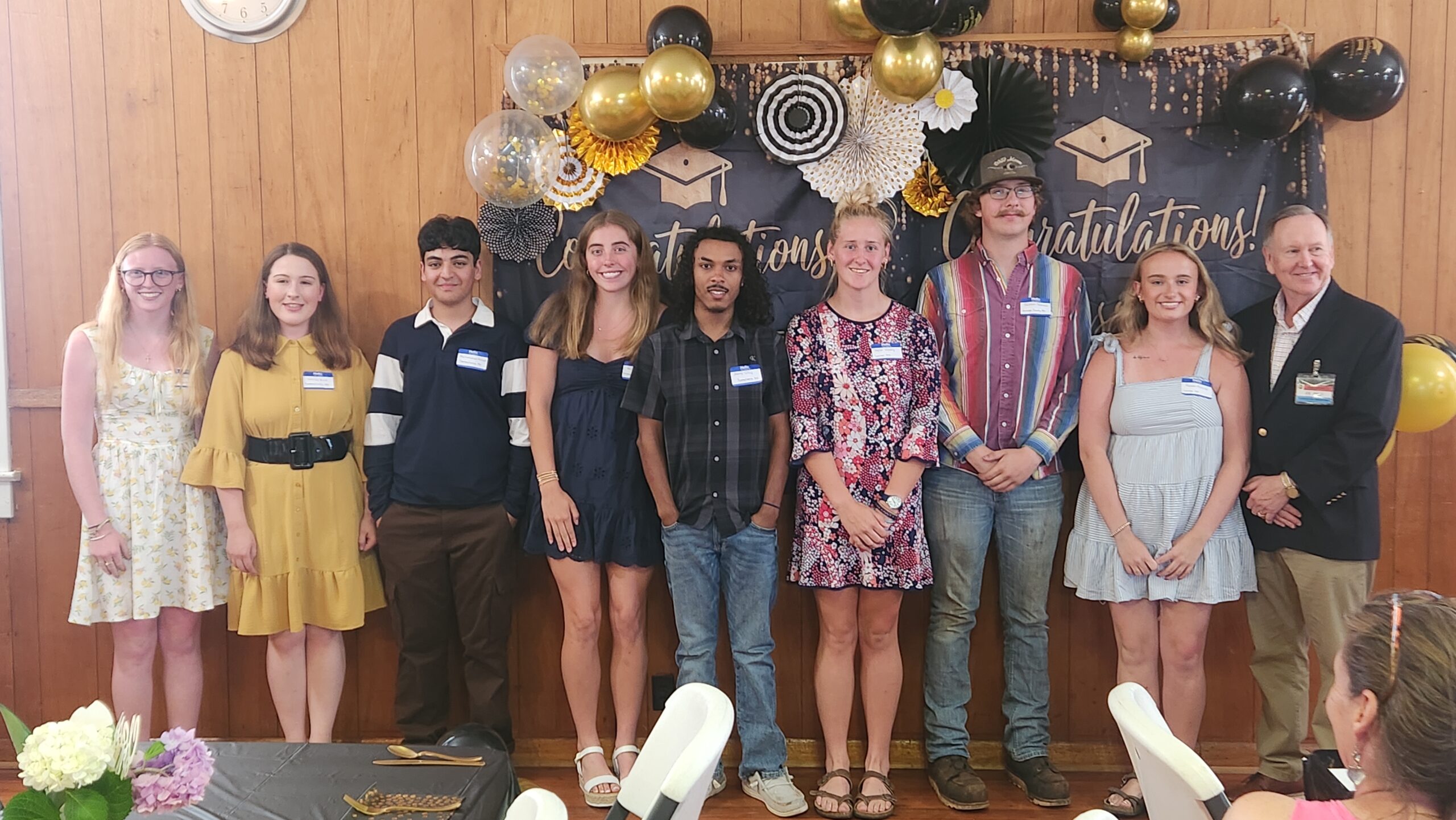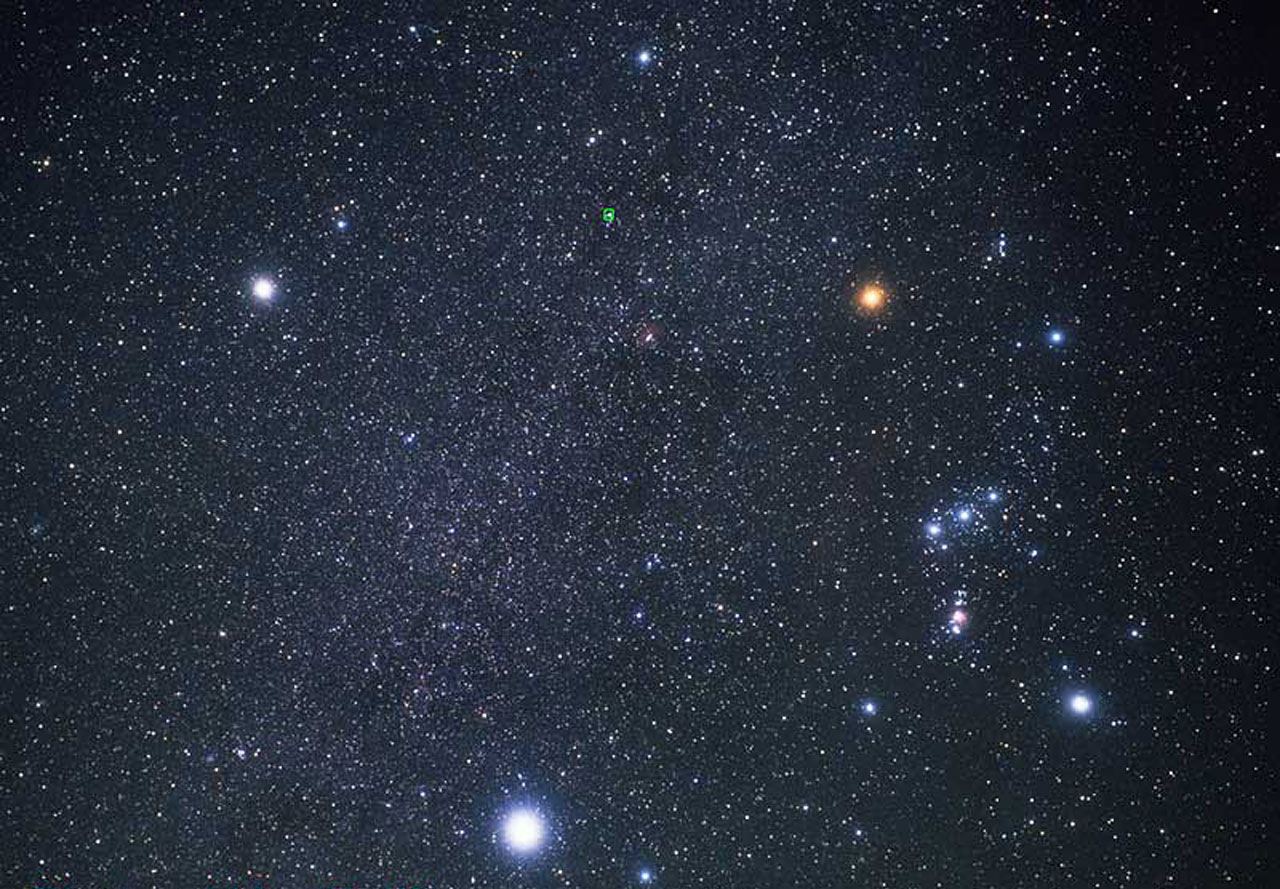The term “Dog Days” is used during the normally hottest time of year in the Northern Hemisphere. This usually lasts from early July through the middle of August. It started a bit earlier than usual this summer. The period of 20 days either side of the conjunction of Sirius and the sun is called the “Dog Days”.
The origins, of the “Dog Days”, go back to the time of the ancient Greeks and Romans. While following the stars, during the summer, they found that a very bright star rose in the sky just before sunrise and stayed with the sun through much of the day. They named it Sirius, which seems to mean, “scorching” or “sparkling”. The ancient Egyptians noticed the rising of Sirius aligned with the seasonal floods of the Nile.
Sirius is the brightest star in the constellation Canis Major, which means Greater Dog, and is located in the dog’s neck. Sirius was dubbed the Dog Star since it was so bright. Sirius is about twice as massive as our sun and over 20 times as bright. It is about 8.6 light years from Earth. The Greeks and Romans thought the heat from Sirius combined with our Sun to produce the very hot and sultry “Dog Days” days of summer.
The real reason July and August are usually the hottest part of the year (in the Northern Hemisphere) is that we are near the end of the period when we receive more energy from the sun, during the day, versus losing energy at night.

I grew up an Air Force Brat. Traveled the country and lived in Georgia, Maine, New York, Hawaii and Oklahoma.
I fell in love with the weather in Oklahoma. My father was transferred to Tinker AFB in 1973. While in Temporary housing (a mobile home, which is the standard in Oklahoma) I experienced my first severe thunderstorm with strong winds and hail the size of baseballs. The next day I was in the base library looking up books on weather. The rest is history.
I graduated from the University of Oklahoma in 1983 with a Bachelor’s Degree in Meteorology. The first two years we took Calculus, Differential equations, Physics, Chemistry and Computer science classes with the Engineering Students. It was a grind. My degree is actually from the College of Engineering. The last 2-3 year’s focus was on Meteorology including Observational networks (Satellite, Radar, Surface), Physics, Thermodynamics, Dynamics, Synoptic, Winter Weather, Severe Weather and Climatology.
My first job out of college was with a small forecasting company in Oklahoma City. I was immediately put on TV (OETA) and Radio (WKY) as their broadcast Meteorologist. After two years in broadcasting, I decided to pursue the National Weather Service route and got a position in Toledo, OH as an intern. After a couple of years, I was promoted to a forecaster position at the Cleveland Forecast office. I quickly moved into the Weather Preparedness position and was responsible for all the preparedness activities in the state of Ohio.
In 1992 I decided to pursue other forecast opportunities and moved to the Meteorological Operations Division of the National Meteorological Center in Washington, DC. This group is now called WPC (Weather Prediction Center). There I fine-tuned my forecasting of Synoptic Weather with my focus on Heavy Convective Rainfall and Winter Storms, under the supervision of Dr. Louis Uccellini. He has written several books on East Coast Winter storms. I was promoted to a Senior Branch Forecast position during my tenure at MOD. Part of my job was to teach weather classes at COMET (Cooperative Program for Operational Meteorology, Education, and Training).
In 2012 I was given the opportunity to start up a new weather support group with the FAA (Federal Aviation Administration) in Warrenton, VA at the ATCSSC (Air Traffic Control System Command Center). The ATCSCC is where the FAA identifies solutions to air traffic inefficiencies in the NAS (National Air Space) for the CONUS (Continental United State). Weather impacts are the biggest impact on Aviation with yearly losses over 20 billion dollars. My job was to help lower these inefficiencies/costs by providing weather impact briefings and forecasts in order to keep the air planes moving as safely and efficiently as possible.
I retired in 2022 and now am running Lake Anna Weather, LLC.
Subscribe for Updates
Sponsors
latest articles
[Spotsylvania] New Speed Enforcement in School Zones
![Featured image for “[Spotsylvania] New Speed Enforcement in School Zones”](https://lakeanna.online/wp-content/uploads/2025/09/Blog-pic-scaled.jpg)
“Say Yes to the Address” with Mary Crowe: A Real Estate Story with Heart [Sponsored]
![Featured image for ““Say Yes to the Address” with Mary Crowe: A Real Estate Story with Heart [Sponsored]”](https://lakeanna.online/wp-content/uploads/2025/09/Blog-pic-3-scaled.png)
Birds on Power Lines? Don’t Shoot

Gordonsville’s Famous Fried Chicken Festival Clucks Into Town Saturday, October 4th [Sponsored]
![Featured image for “Gordonsville’s Famous Fried Chicken Festival Clucks Into Town Saturday, October 4th [Sponsored]”](https://lakeanna.online/wp-content/uploads/2025/08/wordandweekdays.com_-1.webp)
Contrary Creek Local Gordie Graham Wins National Wakeboarding Title at 27

Democracy, Critics & AI

The term “Dog Days” is used during the normally hottest time of year in the Northern Hemisphere. This usually lasts from early July through the middle of August. It started a bit earlier than usual this summer. The period of 20 days either side of the conjunction of Sirius and the sun is called the “Dog Days”.
The origins, of the “Dog Days”, go back to the time of the ancient Greeks and Romans. While following the stars, during the summer, they found that a very bright star rose in the sky just before sunrise and stayed with the sun through much of the day. They named it Sirius, which seems to mean, “scorching” or “sparkling”. The ancient Egyptians noticed the rising of Sirius aligned with the seasonal floods of the Nile.
Sirius is the brightest star in the constellation Canis Major, which means Greater Dog, and is located in the dog’s neck. Sirius was dubbed the Dog Star since it was so bright. Sirius is about twice as massive as our sun and over 20 times as bright. It is about 8.6 light years from Earth. The Greeks and Romans thought the heat from Sirius combined with our Sun to produce the very hot and sultry “Dog Days” days of summer.
The real reason July and August are usually the hottest part of the year (in the Northern Hemisphere) is that we are near the end of the period when we receive more energy from the sun, during the day, versus losing energy at night.

I grew up an Air Force Brat. Traveled the country and lived in Georgia, Maine, New York, Hawaii and Oklahoma.
I fell in love with the weather in Oklahoma. My father was transferred to Tinker AFB in 1973. While in Temporary housing (a mobile home, which is the standard in Oklahoma) I experienced my first severe thunderstorm with strong winds and hail the size of baseballs. The next day I was in the base library looking up books on weather. The rest is history.
I graduated from the University of Oklahoma in 1983 with a Bachelor’s Degree in Meteorology. The first two years we took Calculus, Differential equations, Physics, Chemistry and Computer science classes with the Engineering Students. It was a grind. My degree is actually from the College of Engineering. The last 2-3 year’s focus was on Meteorology including Observational networks (Satellite, Radar, Surface), Physics, Thermodynamics, Dynamics, Synoptic, Winter Weather, Severe Weather and Climatology.
My first job out of college was with a small forecasting company in Oklahoma City. I was immediately put on TV (OETA) and Radio (WKY) as their broadcast Meteorologist. After two years in broadcasting, I decided to pursue the National Weather Service route and got a position in Toledo, OH as an intern. After a couple of years, I was promoted to a forecaster position at the Cleveland Forecast office. I quickly moved into the Weather Preparedness position and was responsible for all the preparedness activities in the state of Ohio.
In 1992 I decided to pursue other forecast opportunities and moved to the Meteorological Operations Division of the National Meteorological Center in Washington, DC. This group is now called WPC (Weather Prediction Center). There I fine-tuned my forecasting of Synoptic Weather with my focus on Heavy Convective Rainfall and Winter Storms, under the supervision of Dr. Louis Uccellini. He has written several books on East Coast Winter storms. I was promoted to a Senior Branch Forecast position during my tenure at MOD. Part of my job was to teach weather classes at COMET (Cooperative Program for Operational Meteorology, Education, and Training).
In 2012 I was given the opportunity to start up a new weather support group with the FAA (Federal Aviation Administration) in Warrenton, VA at the ATCSSC (Air Traffic Control System Command Center). The ATCSCC is where the FAA identifies solutions to air traffic inefficiencies in the NAS (National Air Space) for the CONUS (Continental United State). Weather impacts are the biggest impact on Aviation with yearly losses over 20 billion dollars. My job was to help lower these inefficiencies/costs by providing weather impact briefings and forecasts in order to keep the air planes moving as safely and efficiently as possible.
I retired in 2022 and now am running Lake Anna Weather, LLC.
Subscribe for Updates
Sponsors
latest articles
[Spotsylvania] New Speed Enforcement in School Zones
![Featured image for “[Spotsylvania] New Speed Enforcement in School Zones”](https://lakeanna.online/wp-content/uploads/2025/09/Blog-pic-scaled.jpg)
“Say Yes to the Address” with Mary Crowe: A Real Estate Story with Heart [Sponsored]
![Featured image for ““Say Yes to the Address” with Mary Crowe: A Real Estate Story with Heart [Sponsored]”](https://lakeanna.online/wp-content/uploads/2025/09/Blog-pic-3-scaled.png)
Birds on Power Lines? Don’t Shoot

Gordonsville’s Famous Fried Chicken Festival Clucks Into Town Saturday, October 4th [Sponsored]
![Featured image for “Gordonsville’s Famous Fried Chicken Festival Clucks Into Town Saturday, October 4th [Sponsored]”](https://lakeanna.online/wp-content/uploads/2025/08/wordandweekdays.com_-1.webp)
Contrary Creek Local Gordie Graham Wins National Wakeboarding Title at 27

Democracy, Critics & AI

![Featured image for “[Spotsylvania] New Speed Enforcement in School Zones”](https://lakeanna.online/wp-content/uploads/2025/09/Blog-pic-scaled.jpg)
[Spotsylvania] New Speed Enforcement in School Zones
Article By Jen Bailey

Belmont Ruritan Clubs Award $26,000 in Scholarships to Local Seniors
Article By Jen Bailey









